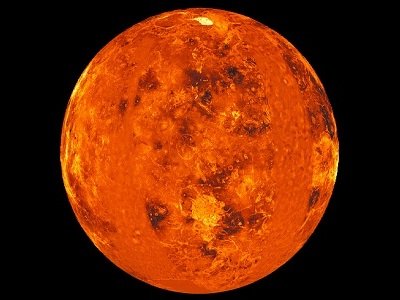
The 8 (eight) planets in our solar system are peculiar in their own way. Earth with a lot of water is the only one to sustain biological life. There could be aliens on other planets but for now let's stick to NOT. I have read about sulfuric acid rain on Jupiter, giant methane storms on Uranus and Neptune but the most astonishing is metallic snow on Venus (heavy metal frost to be exact).
This is probably not surprising to Astrophysicists and Astronomers but to those of us with knowledge of astronomy limited to the eight planets (previously 9 including Pluto) orbiting the sun with the moon orbiting the earth, this is astonishing.
VENUS
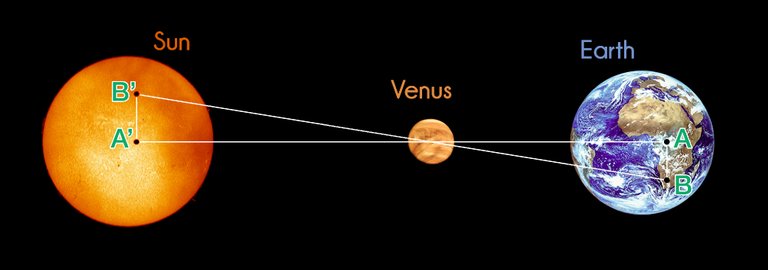
This is the second planet closest to the sun in our system. Its size and structure is solar to that of the earth in some ways. It is the closest planet to earth; closer than Mars. It spins in the opposite direction earth and other planets do. Venus is considered the hottest planet in our solar system due to the ability of its thick atmosphere to trap heat like a greenhouse effect. It has no moon of its own. Planet Venus is named after the the Roman goddess of beauty and love, Venus.
Size:
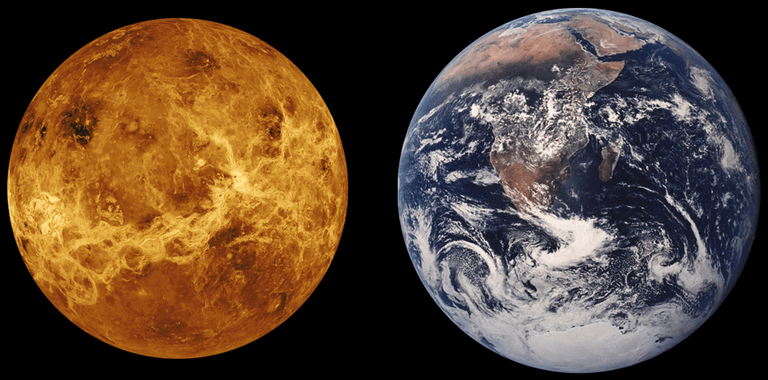
Venus had a radius of 6052 kilometers (3760 miles). It is almost the same size as the radius of earth which is 6371 kilometers. Its average distance from the sun is about 108,208,930 km (67237910 miles) from the sun. That is 0.72 AU (Astronomical Units- distance from earth to sun is 1.0 AU).
Orbit and rotation:
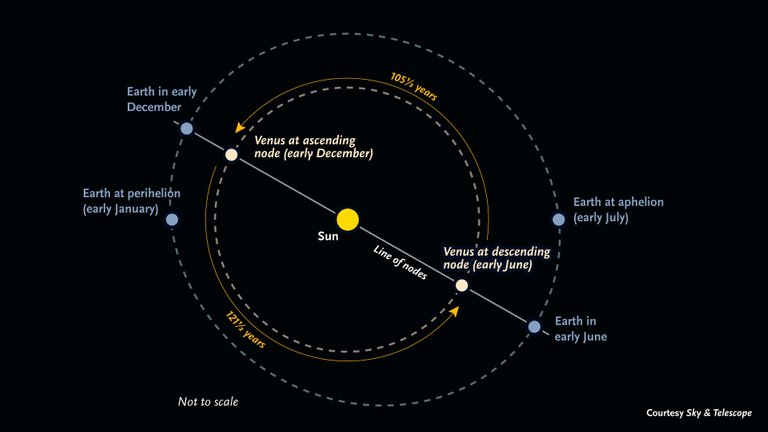
This is a very unique planet in its own right. It rotates in the opposite direction as other planets. Rotating from east to the west, it is one of two planets that do so; the other being Uranus.
It takes about 244 earth days for Venus to complete one rotation. It takes earthworm only 24 hours to do same. In fact one Venus year (225 earth days) is shorter than the time it takes to complete one rotation. Due to its rotation being in a direction opposite its revolution around the sun, it takes 117 earth days to complete one day-night cycle.
Therefore in one Venus year, there are only 2 days!
With an axial tilt of 3 degrees, it spins almost upright and also orbits the sun in a near perfect circle compared to other planets with orbits more oval-shaped (elliptical). This causes absence of seasons on Venus.
Structure and Surface:
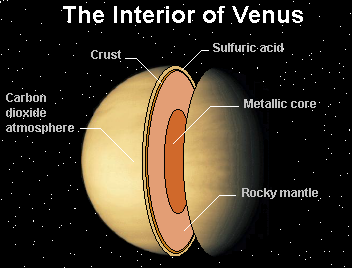
The surface of Venus is mostly hidden by a thick atmosphere however, using radar equipment, its surface has been determined to be relatively smooth unlike mercury and Mars that have lots of craters on their surfaces. It does have mountains with one about 11 km high (higher than Mount Everest).
Venus has 2 "continents", one to the north and the other just to the south of the equator. Most of its crust is considered to be completely solidified unlike earth which has oceans.
The magnetic field of Venus is a lot weaker than that of earth. The current theory is that it could be as a result of its slow spin. Devoid of tectonic plates, there is no chance of quakes.
Atmosphere:
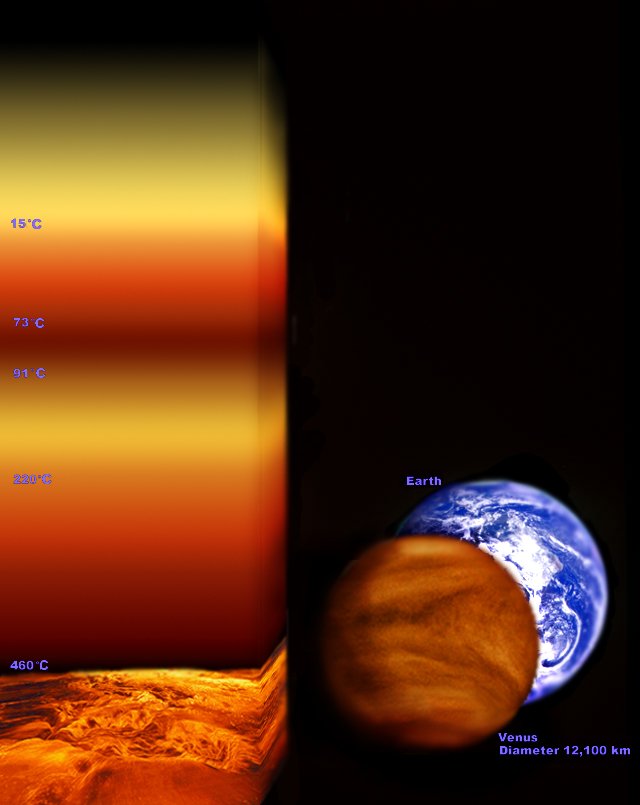
|Temperatures at different altitudes
The atmosphere on Venus is very thick and mostly made up of carbon dioxide (96%), nitrogen (3.5%), venom monoxide, sulfur dioxide and water vapour makes up the remaining 0.5%. Despite the nitrogen content being just 3.5%, it is still higher than the amounts on earth. This is due to the high atmospheric pressure compressing all the gasses on Venus.
The thick cloud of those gases make it almost impossible for heat to escape, keeping the temperatures always at the high side (average of 480 degrees Celsius). It is hotter than mercury despite being farther away from the sun that mercury.
Heavy Metal Frost on Venus
Due to the extreme temperatures of the surface of Venus, exploration has been limited. However using radar technology, certain improvements have been made in our knowledge of the nature of Venus.
At temperatures as high as 480 degrees Celsius, some of the minerals on the surface of Venus are vaporized. Reaching very high altitudes, they condense to form a metallic frost. This coats the tips of the few mountains on Venus.

|Metal capped mountain top
Most of the minerals are galena and bismuthinite, some of the heaviest metals known. This puts the extreme temperatures on Venus in perspective.
More time is being out into analyzing data acquired over the years to further understand this planets hidden secrets and to further elaborate on this idea of heavy metal snow fall.
However acid rains are quite abundant on Venus. It even evaporates before reaching the ground.
Definitely not a good place to take anyone for a nice vacation.
For now, I'll settle for visiting Mars in a couple of decades or whenever I get over my fear of flying and motion sickness.
THANKS FOR READING.
Sources:
[NASA](https://solarsystem.nasa.gov/planets/venus/indepth)
[space](https://www.space.com/18527-venus-atmosphere.html)
[Popular Mechanics](http://www.popularmechanics.com/space/deep-space/amp11506/heavy-metal-rain-venus-17349212/)
[Smithsonian](https://www.smithsonianmag.com/smart-news/on-venus-it-snows-metal-99154/)
[Seeker](https://www.seeker.com/amphtml/the-metallic-snow-capped-mountains-of-venus-1767586407.html)
[Wikipedia- Venus](https://en.m.wikipedia.org/wiki/Venus)
Pretty cool! I guess our dreams of moving to ALL the planets in our solar system isn't looking good :/